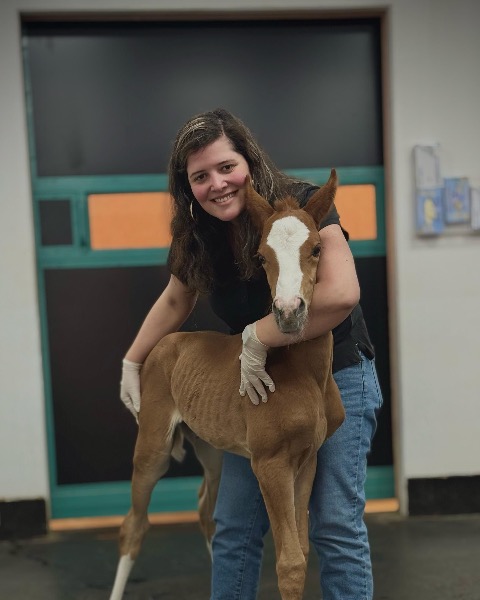Equine
In Person Only
E24 - Poor Agreement Between Resting Tracheal Mucus Scores and Bronchoalveolar Lavage Cytology in Racing Thoroughbreds
Friday, June 20, 2025
8:45 AM - 9:00 AM ET
Location: KICC L006
CE: 0.25 Medical

Carla J. Olave, BVM, PhD, DACVIM-LA
Equine Internal Medicine Specialist
The Equine Hospital - Jockey Club of Saudi Arabia
Riyadh, Ar Riyad, Saudi Arabia
Research Abstract - Oral Presenter(s)
Abstract: Background—Equine asthma is diagnosed by a combination of clinical signs and demonstration of inflammation upon bronchoalveolar (BAL) cytology and/or endoscopic examination of the airway. The degree of agreement between cytology and endoscopic mucus scores in resting horses is controversial.
Hypothesis/Objectives – Endoscopic tracheal mucus score is a poor predictor of BAL cytology in Thoroughbred racehorses at time points distant from strenuous exercise.
Animals –124 Thoroughbred racehorses housed at racetracks in the USA.
Methods –BAL cytology, mucus scores, and exercise-induced pulmonary hemorrhage (EIPH) scores were collected during two prospective-randomized trials from horses during non-racing days. Generalized linear mixed models (GLMM) were constructed to determine if tracheal mucus scores predicted BAL inflammatory cell proportions, controlling for age and EIPH scores. Cohen’s kappa was calculated to determine agreement between mucus score and BAL cytology in the diagnosis of asthma. Significance was set at p< 0.05.
Results – BAL Neutrophil proportions were inversely related to mucus score (p < 0.0001) but positively related to EIPH score(p < 0.0001) and age(p < 0.0001). BAL mast cell proportions were not related to mucus score (p=0.58). BAL eosinophil proportions were positively related to the EIPH score (p < 0.0001) and negatively related to age and mucus score (p < 0.0001). No agreement was observed between mucus score and BAL cytology (0.02)
Conclusions and clinical importance—Endoscopic mucus score is not a good predictor of lower airway inflammation when not performed shortly after racing. A positive relationship was observed between the EIPH score and neutrophilic and eosinophilic inflammation. Further investigation of the relationship between EIPH and airway inflammation is warranted.
Hypothesis/Objectives – Endoscopic tracheal mucus score is a poor predictor of BAL cytology in Thoroughbred racehorses at time points distant from strenuous exercise.
Animals –124 Thoroughbred racehorses housed at racetracks in the USA.
Methods –BAL cytology, mucus scores, and exercise-induced pulmonary hemorrhage (EIPH) scores were collected during two prospective-randomized trials from horses during non-racing days. Generalized linear mixed models (GLMM) were constructed to determine if tracheal mucus scores predicted BAL inflammatory cell proportions, controlling for age and EIPH scores. Cohen’s kappa was calculated to determine agreement between mucus score and BAL cytology in the diagnosis of asthma. Significance was set at p< 0.05.
Results – BAL Neutrophil proportions were inversely related to mucus score (p < 0.0001) but positively related to EIPH score(p < 0.0001) and age(p < 0.0001). BAL mast cell proportions were not related to mucus score (p=0.58). BAL eosinophil proportions were positively related to the EIPH score (p < 0.0001) and negatively related to age and mucus score (p < 0.0001). No agreement was observed between mucus score and BAL cytology (0.02)
Conclusions and clinical importance—Endoscopic mucus score is not a good predictor of lower airway inflammation when not performed shortly after racing. A positive relationship was observed between the EIPH score and neutrophilic and eosinophilic inflammation. Further investigation of the relationship between EIPH and airway inflammation is warranted.


